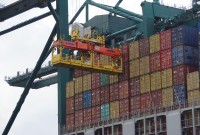- Home
- Business Processes
- Industry Knowledge
- Aerospace Industry
- Automotive Industry
- Banking Domain
- BFSI Industry
- Consumer/ FMCG Industry
- Chemicals Industry
- Engineering & Construction
- Energy Industry
- Education Domain
- Finance Domain
- Hospitality Domain
- Healthcare Industry
- Insurance Domain
- Retail Industry
- Travel and Tourism Domain
- Telecom Industry
- Leadership Skills
- eLearning
- Home
- Business Processes
- Warehouse Management
- Outbound Picking Process
Outbound Picking Process
When a customer wants a product that has been stored in the warehouse, the same need to be picked off the shelf (or off the floor) and get it ready for shipping. Depending on how big is the warehouse, picking can take a while. (Many distribution centers cover more than 1 million square feet.). Hence, warehouse order picking methods are an important aspect within any warehouse.
When a customer wants a product that has been stored in the warehouse, the same need to be picked off the shelf (or off the floor) and get it ready for shipping. Depending on how big is the warehouse, picking can take a while. (Many distribution centers cover more than 1 million square feet.). Hence, warehouse order picking methods are an important aspect within any warehouse. Compared to shipping, storage, and receiving stages, order picking forms as much as 55% of operation costs in a distribution center.
If two customers order the same product, one need to pick both items at the same time. And if a single customer orders two products, one would want to pick both products during the same trip. When you think about how much time it takes to travel between where items are stored and where they’re packaged for shipment, you see how
important defining an efficient picking process could be. It has a direct impact on how satisfied your customers are. If your picking methods in the warehouse are quick and accurate, your business will succeed.
This topic describes the picking process in detail and the variations used across industry to design this activity. We will also focus on some best practices deployed across industry. A warehouse management system should generate pick lists for each picker to retrieve items in the most efficient way. For each new order, the picker will receive a packing slip of the items ordered and storage locations at the warehouse. The picker will collect the ordered products from their respective locations. This may include zone picking, wave picking, or batch picking.
What Is Order Picking?
Order picking is the process of selecting items from a warehouse , to fulfill customer orders. When it comes to warehouse order picking methods, the choices you make have a big impact on your supply chain. Choosing the right order picking strategies will go a long way for your business, leading to improvements such as reduced labor costs, improved customer service, and the best use of warehouse space.
The Importance of Order Picking
The order picking process involves pulling items from inventory to fill a customer’s order. This is often seen as the most labor-intensive task within a warehouse. Since order picking often requires heavy physical labor, the process can be slow, affected by human error, and unproductive. Getting customers their orders on time is crucial to the success of any brand or business.
Use of Technology
Technologies introduced in the past few years are make picking more efficient. Given below are some recent innovations:
- A warehouse execution system uses sophisticated routing algorithms.
- Define pick paths that minimize time and distance.
- Use of robots for picking the orders.
- Pick-to-light systems and other displays to give pickers visual cues.
- Pick-to-voice systems telling pickers where to go and what to pick
Related Links
You May Also Like
-
In the normal course of business, customers are likely to return orders from time to time due to various reasons and business should design processes the manage and accept such returns. A well designed returns management process can reduce costs and issues associated with returns or exchanges.
-
Resource Planning is the process of planning for expected workload and determining the number of resources required to complete each activity in the warehouse. There are many types of warehouse positions, and they also vary by the employer, the scale of operations and location. Discussed here are generic positions applicable to warehouse management processes.
-
Before shipping, businesses need to make sure that the items will arrive in good condition. Packaging is a form of protection against environmental threats that the product will face from the time it leaves warehouse facility until the time it reached the customer. The packaging is intended to provide protection for the item as it is being handled in the warehouse or when the item is being shipped.
-
Warehouses may seem like a simple, straightforward concept, but they actually include a variety of different types of warehouses that all have their own niche. The type of warehousing that’s right for you depends on your specific industry, location, and needs. From private warehousing, distribution centers, and climate-controlled warehouses, there’s an option to suit every business.
-
Miscellaneous Warehouse Processes
At the end of each inventory control, the Contractor provides the Ordering Person with an inventory report which contains a list of all stock adjustments. The Ordering Person uses the report to create, by use of his/her own means, necessary value and accounting adjustments related to the stock. Let us look at some to the mislaneous warehouse processes not covered earlier.
-
Types of Order Picking Methods in the Warehouse
There are many different types of picking in a warehouse and each one works as a customized solution for each business. Depending on the size of your warehouse and inventory, the manpower you have on hand, and the number of customer orders made each day, there may be certain methods that are more efficient for you than others.
-
The Outbound process starts with routing the shipments. The Outbound execution process starts from the point when pick tasks are completed for an outbound shipment and ends at the point where the outbound packages are loaded into trailers. The Warehouse Outbound process includes managing and controlling outgoing materials starting from the download of orders through to the shipping of products from the warehouse.
-
Warehouse management and distribution logistics involve the physical warehouse where products are stored, as well as the receipt and movement of goods takes place. Warehouse management aims to control the storage and movement of products and materials within a warehouse. These operations include the receipting of inwards goods, tracking, stacking and stock movement through the warehouse.
-
What is a Warehouse & why companies need them?
All organizations hold stocks. In virtually every supply chain, gaps exist between when something is produced and when a customer is ready to buy or receive it. Stocks occur at any point in the supply chain where the flow of materials is interrupted. This implies that products need to be stored during this period of gap.
-
Business Case of Multiple Warehouses
Adding extra warehouses to business provides many benefits such as reducing shipping costs, increasing storage capacity, and having warehouses for specific purposes to simplify overall warehouse management. Multiple warehouses allow you to organize your inventory in a way that helps your business be more effective.
Explore Our Free Training Articles or
Sign Up to Start With Our eLearning Courses

About Us
Learning
© 2023 TechnoFunc, All Rights Reserved











